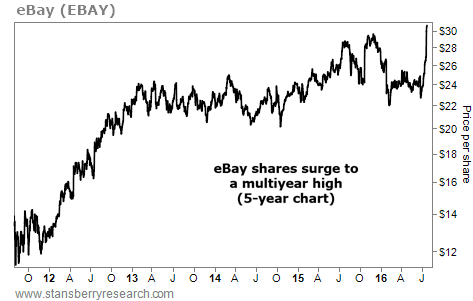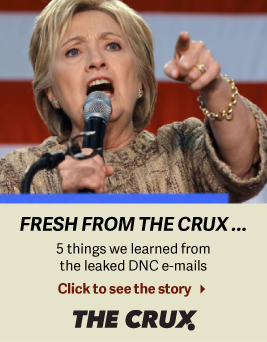| Home | About Us | Resources | Archive | Free Reports | Market Window |
The One Secret of the World's Greatest InvestorsBy
Wednesday, July 27, 2016
Only a handful of investors beat the market by a substantial margin over the long haul.
Some of them do it by pursuing growth. Others focus on value. But all of them know one big secret.
What is it? I'll give you three hints:
Lord Rothschild said, "The time to buy is when there is blood in the streets."
John Templeton, the man who almost single-handedly pioneered the field of global investing, said the best bargains can be found only "at the point of maximum pessimism."
And Warren Buffett, the most successful investor of our lifetime, said, "Be fearful when others are greedy, and greedy when others are fearful."
The best investors have a contrarian spirit. They don't care about the consensus. They draw their own conclusions.
Contrarians understand that fear and greed cause people to push prices too high or too low. So the key is to look at market fluctuations as your friend rather than your enemy.
That way, you can profit from folly rather than participate in it.
How can you tell if something is truly a contrarian investment? There are three primary metrics...
The first is if an asset class has underperformed its long-term average return for a substantial period of time. Another is if valuation metrics show the asset is extraordinarily cheap relative to traditional assessments.
But the third metric is the clincher... When you tell your friends and family what you're buying, they have to scrunch up their faces and say, "But why would you invest in that?"
With these metrics in mind, let me suggest that now is probably an excellent time for long-term investors to buy – egad – European stocks.
On the bases of sales, earnings, book value, and dividends, European stocks were already nearly back to their 2011-2012 crisis lows before the "Brexit" vote.
Since then, they have gotten considerably cheaper.
On the day after the British vote to exit the European Union, the Vanguard FTSE Europe Fund (VGK) plunged 11.3%. That was the worst one-day return in the fund's history.
The next day, it fell another 3%.
Metric 1: The fund has way underperformed its long-term average.
Over the last century, European stocks have returned 10% a year, the same as U.S. stocks.
However, U.S. stocks have outperformed European stocks by 9.8% per year for five years running. In fact, European stocks have lost an average of 0.5% annually over the past decade, according to financial-data provider MSCI.
Metric 2: Are European stocks unequivocally cheap?
Yep. They are 20% cheaper than U.S. stocks on an earnings basis. Also, the S&P 500 currently yields 2%. European stocks yield 3.2%.
Metric 3: Are investors optimistic or pessimistic about Europe right now?
Prepare for a lot of face-scrunching. Most have very little invested there. And those who do – after experiencing a down decade – are wondering whether investing there will ever pay off.
Who says no one rings a bell at the bottom?
Of course, actual market bottoms can only be identified with the luxury of hindsight. And European stocks could certainly go lower in the near term.
But if you have any contrarian blood at all, take a half-position in a European fund like the Vanguard FTSE Europe Fund (VGK). If Old World stocks sell off substantially further, buy the other half.
True contrarians will instinctively recognize the benefit of investing this way. (Higher returns with less risk.) The rest – the great majority of investors – will not put a single penny to work here.
In a speech in 1963, securities analyst Benjamin Graham, Warren Buffett's mentor, said, "In my nearly 50 years of experience in Wall Street I've found that I know less and less about what the stock market is going to do, but I know more and more about what investors ought to do."
Indeed. If Benjamin Graham – the father of value investing – were alive today, one thing is clear: He would be buying the best European stocks.
Good investing,
Alexander Green
Further Reading:
Steve Sjuggerud uses another "real world" indicator to judge investor sentiment: the "cocktail-party indicator." As he explains, it's "the first nearly infallible warning sign that a big trend is nearing an end." Learn how to put it to work right here.
Another one of Steve's favorite contrarian ideas is "bad to less bad" trading. Get the details of this strategy in the Stansberry Research Education Center right here.
Market NotesTHE BULL MARKET IN ONLINE SHOPPING Things might not be all rosy in the U.S., but you wouldn't know it by looking at today's chart...
Earlier this year, we highlighted the long-term uptrend in online retailer Amazon, whose shares are up nearly 140% since the start of 2015. Another Internet retailer on the rise is online auctioneer eBay (EBAY).
As one of the world's largest online marketplaces, eBay is a one-stop shop for anyone looking to buy or sell anything from a tennis racquet to a pickup truck. With more than 160 million active users on the site, and around 1 billion items listed for sale at any given time, it's no wonder why business is booming for eBay today.
You can see below that eBay shares have been one of the market's strongest performers in recent history. The stock is up more than 115% over the last five years, recently hitting a fresh multiyear high. If U.S. consumers continue to buy and sell their goods at a record pace, can things really be all that bad?
 |
Recent Articles
|



